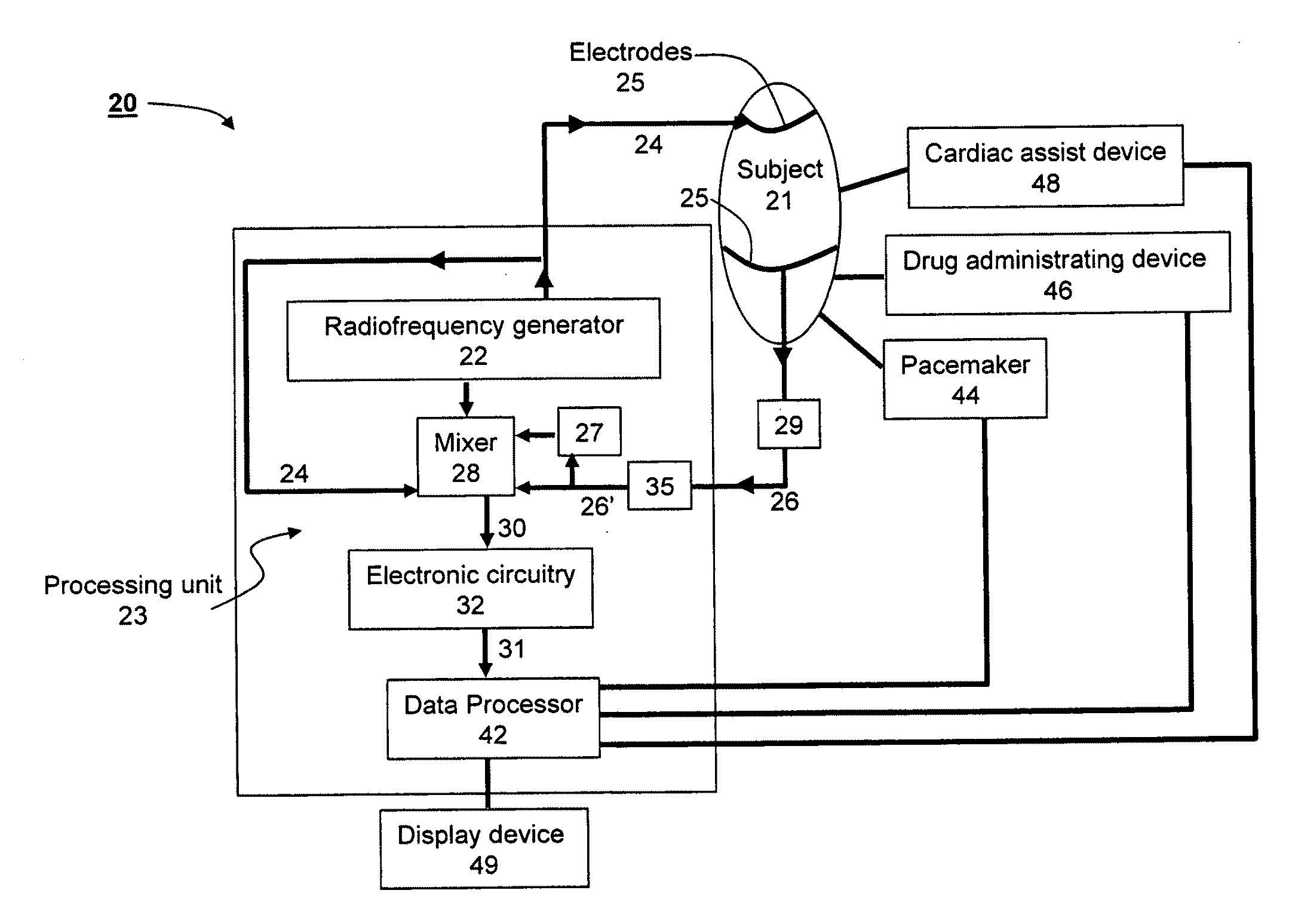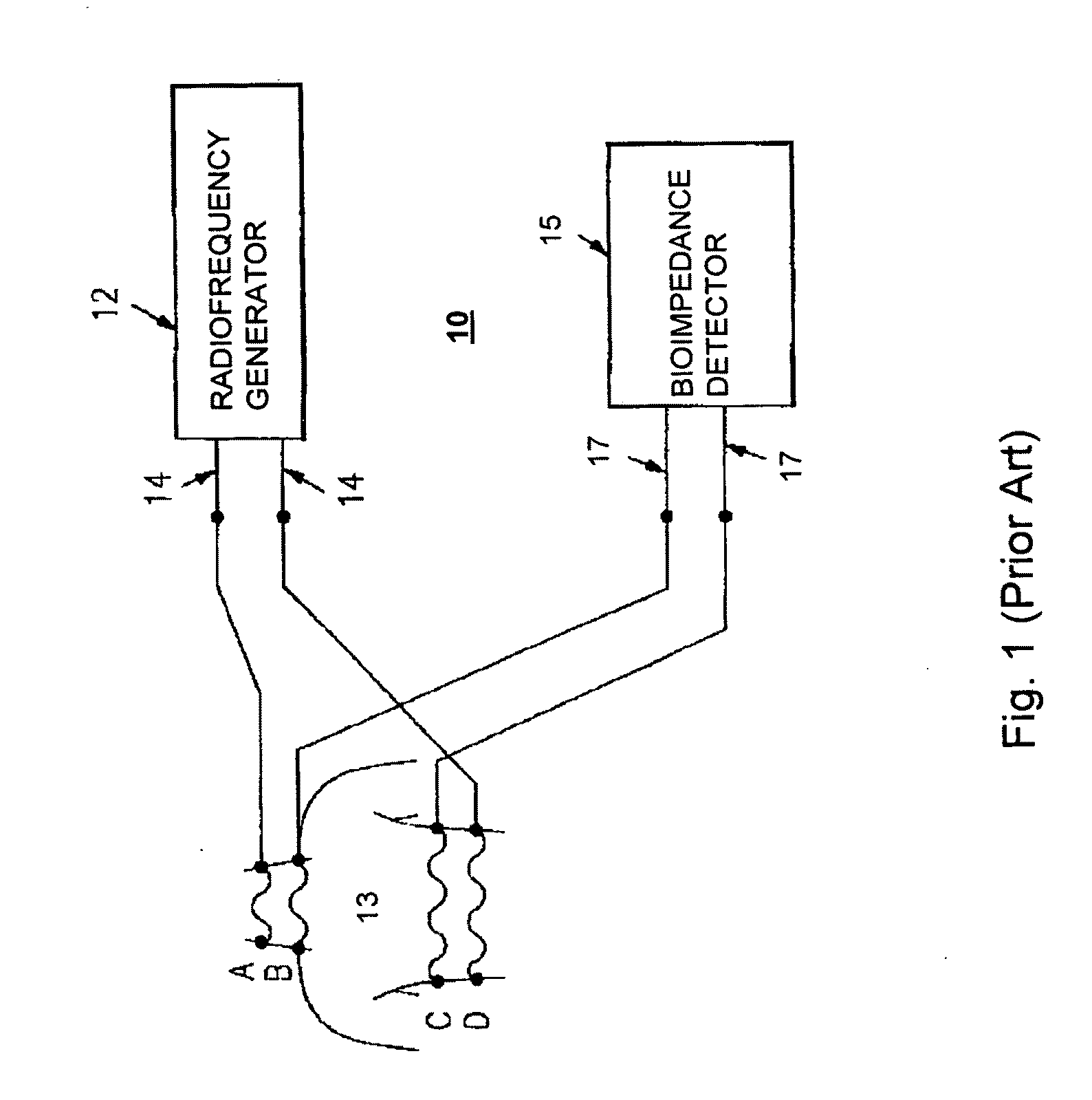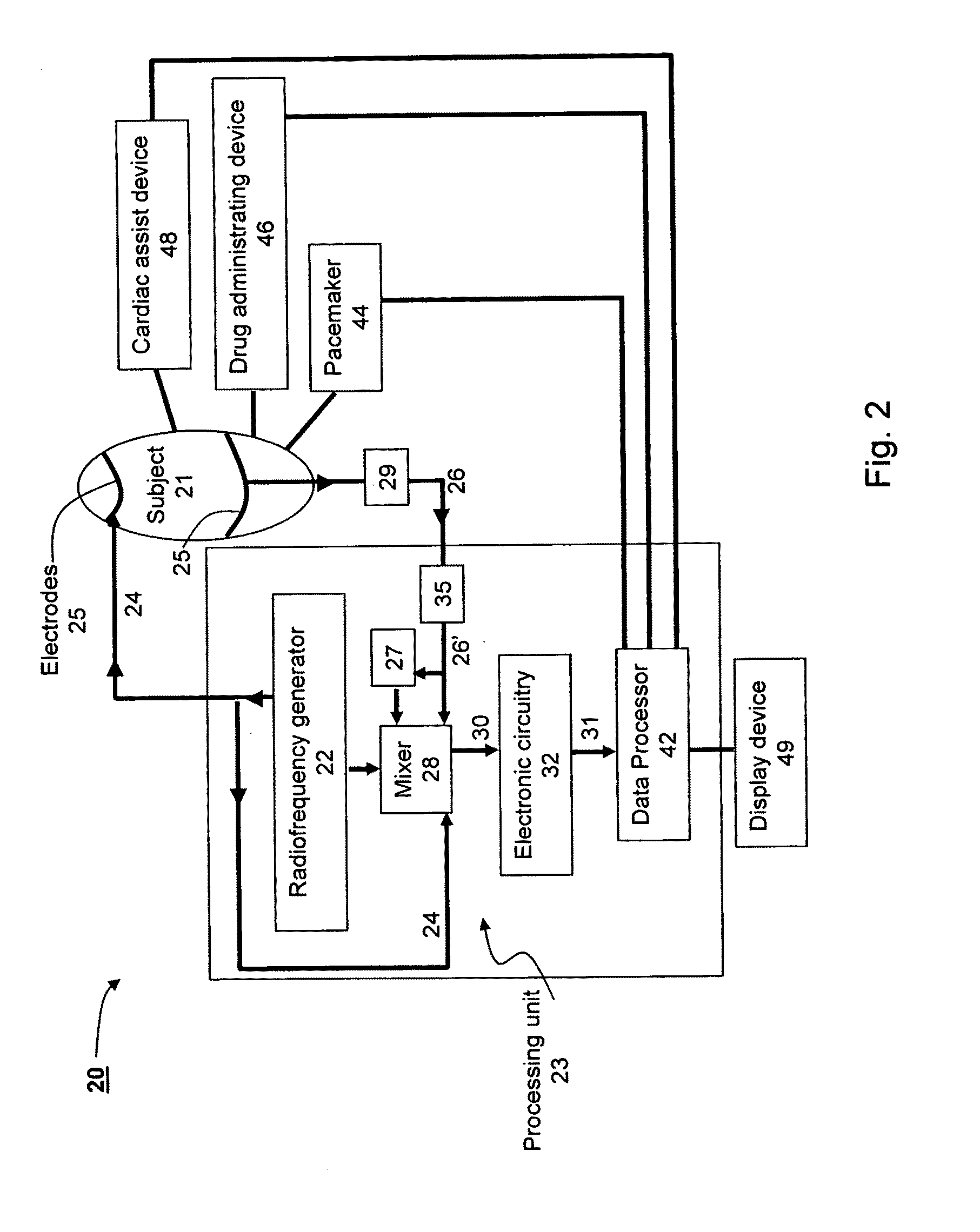System, Method and Apparatus for Measuring Blood Flow and Blood Volume
- Summary
- Abstract
- Description
- Claims
- Application Information
AI Technical Summary
Benefits of technology
Problems solved by technology
Method used
Image
Examples
example 1
Measurement of Stroke Volume and Cardiac Output Using Three Electrodes
[0185]Three electrodes were connected to a human subject, as shown in FIG. 4a. The hemodynamic reactance was measured and was used for determining and monitoring (i) stroke volume; and (ii) cardiac output.
[0186]FIGS. 10a-b shows the monitoring results obtained using the prototype system (using the circuitry of FIG. 9a) on a time scale of 250 ms / div. Two waveforms are displayed in each of FIGS. 10a-b, the change in the hemodynamic reactance and its measured time derivative. The waveforms shown in FIG. 10b are in reverse magnification compared to the waveforms shown in FIG. 10a.
[0187]For comparison, FIG. 10c shows monitoring results obtained using a conventional system (GE / Cardiodynamic). The waveforms displayed in FIG. 10c, are, from top to bottom, the ECG signal, the change in the bioimpedance, ΔZ, its first derivative, dZ / dt and its second derivative d2Z / dt2.
[0188]The improvement of the signal-to noise ratio of ...
example 2
Measurement of Brain Intra Luminal Blood Volume Change and Flow Rate Using Two Electrodes
[0189]Two electrodes were connected to a human subject, as shown in FIG. 4e. The hemodynamic reactance was measured and was used for determining and monitoring brain intra luminal blood volume change and flow rate.
[0190]FIGS. 11a-b show the monitoring results obtained using the prototype system (using the circuitry of FIG. 9b) on a time scale of 250 ms / div. Two waveforms are displayed in each of FIGS. 11a-b, the change in the hemodynamic reactance and its measured derivative, where in FIG. 11b, the vertical scale for the curve of the change in the hemodynamic reactance is twice larger than the respective curve in
[0191]FIG. 11a.
[0192]As shown in FIGS. 11a-b, a good signal-to noise ratio of 50 dB was obtained for both quantities. The curves of the present example acquire a sharper peak, as compared to Example 1. This phenomenon is consistent with physiological findings, according to which the res...
example 3
Measurement of Stroke Volume and Cardiac Output Using Four Electrodes
[0193]Four electrodes were connected to a human subject, as shown in FIG. 4b. The hemodynamic reactance was measured and was used for determining and monitoring (i) stroke volume; and (ii) cardiac output.
[0194]FIG. 12a shows the monitoring results obtained using the prototype system (using the circuitry of FIG. 9c) on a time scale of 500 ms / div. Two waveforms are displayed in FIG. 12, the change in the change in the hemodynamic reactance and its measured time derivative.
[0195]FIG. 12b shows a comparison between the CO signal as calculated from the phase shift Δφ according to the embodiments of the invention, and data acquired from other channels. From top to bottom, FIG. 12b shows, as a function of time: ECG lead I (designated I In FIG. 12b), ECG lead II (designated II), left blood wave front (L), right blood wave front (R), CO signal (N), first derivative of the CO signal (dN) and second derivative of the CO signa...
PUM
 Login to View More
Login to View More Abstract
Description
Claims
Application Information
 Login to View More
Login to View More - R&D
- Intellectual Property
- Life Sciences
- Materials
- Tech Scout
- Unparalleled Data Quality
- Higher Quality Content
- 60% Fewer Hallucinations
Browse by: Latest US Patents, China's latest patents, Technical Efficacy Thesaurus, Application Domain, Technology Topic, Popular Technical Reports.
© 2025 PatSnap. All rights reserved.Legal|Privacy policy|Modern Slavery Act Transparency Statement|Sitemap|About US| Contact US: help@patsnap.com



